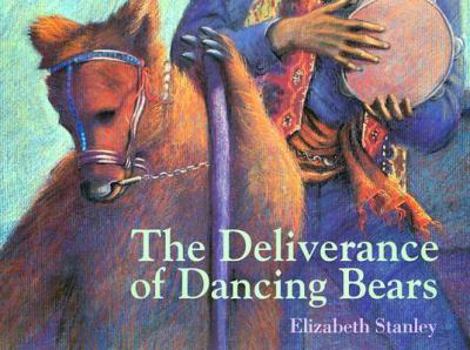The Deliverance of Dancing Bears
Select Format
Select Condition 
Book Overview
The Deliverance of Dancing Bears is a beautifully illustrated contemporary fable about a dancing bear whose dreams of freedom keep her spirit alive despite the pain and degradation of her existence.... This description may be from another edition of this product.
Format:Hardcover
Language:English
ISBN:1929132417
ISBN13:9781929132416
Release Date:January 2003
Publisher:Kane/Miller Book Publishers
Length:40 Pages
Weight:2.30 lbs.
Dimensions:0.4" x 11.1" x 9.5"
Age Range:6 years and up
Grade Range:Grade 1
Customer Reviews
3 ratings
Well done and compassionate.
Published by Thriftbooks.com User , 15 years ago
This is a children's book with text and illustrations to tell the story. If you have any compassion for exploited animals you will appreciate this touching book for our young readers. I feel the book is important to teach morals at an early age. The dancing bear trade is a cruel practice. Apparently the author witnessed this during her foreign travels and decided to make use of her authorship on the subject. She explains this briefly at the end of her book.
An original and involving parable
Published by Thriftbooks.com User , 21 years ago
Named an honor book of The Children's Book Council of Australia, The Deliverance Of Dancing Bears is a wonderful picture book story written by Elizabeth Stanley for young readers having intermediate level reading skills. This very highly recommended account is about a captive bear who forced to dance, and who clings to hope, even though the degradations of her daily life cause her spirit to ebb. It is a kind-hearted peasant who liberates the bear and who reminds all of those watching of an important moral lesson about dignity and life. Elizabeth Stanley's touching and emotional color artwork highlights and enhances her original and involving parable.
The Deliverance of Dancing Bears
Published by Thriftbooks.com User , 24 years ago
"The Deliverance of Dancing Bears" tells the story ofan unnamed bear that is taken every day by its "owner" to amarket square in a mountain village of eastern Turkey and set to dance on its hind legs for hours. Elizabeth Stanley's prose makes clear to young readers that this is not really dancing. "Around and around the poor bear turned on her two back legs, her head pulled from side to side by the chain which Haluk jangled to the clatter of his tambourine... The performance continued relentlessly for many hours until day began to fade [and] Haluk led the bear back to her cage and lock[ed] the door." Stanley's pastel illustrations in purple, blue, gold, scarlet and indigo evoke the liveliness of Turkish village life as people go about their ordinary business of shopping, eating and paying the bearkeeper to see dancing bear. The overall effect of these village scenes, however, is depressing. The heavily textured paper to which the pastels are applied seems to drain the light out of these sad market scenes, in which no-one seems to smile. The power of the book, however, comes from the scenes that depict the dreams of the chained bear. The scenes that show her fishing in mountain streams with her mate or lying lazily with her babies in the sun are full of shimmering light and vibrant energy. And thankfully, the bear's dreams come true. An old man named Yusuf buys the bear from Haluk, takes it with him to his house by a stream and slowly reintroduces it to the wild. And that is just the beginning of this eloquently written and superbly illustrated book dedicated to relieving the suffering of captive bears. Stanley saw her first "dancing bear" in 1979 in Athens and decided then to write a book to challenge the assumption that men could cruelly use wild animals to make money. In 1992 she took her written text to Turkey to take photos and to make sketches for the artwork. In the same year The World Society for the Protection of Animals effected the release and the return to the wild of all chained bears in Turkey. Today there are no dancing bears in Greece or Turkey. But a recent WISPA report has revealed that the trade in dancing bears is still alive and well in India. It says that "60-70% of cubs taken from the wild die before they even begin their brutal training. Dehydration, starvation and trauma are all reasons [for their dying]. Should the cub be lucky enough to live, a punishing regime of starvation and beating will begin to condition it to perform. The piercing of the cub's sensitive muzzle with a rope for control is the next ordeal. It is held down without anaesthetic while a crude iron needle is heated in a coal fire and plunged in with a group of men holding the squealing cub tight. The investigators also found that the site of the nose piercing was invariably infected in all the seventeen cases observed. 'The cub would the have to suffer a second piercing before the first was healed, compounding his agony,' explained Geete Seshamani.





